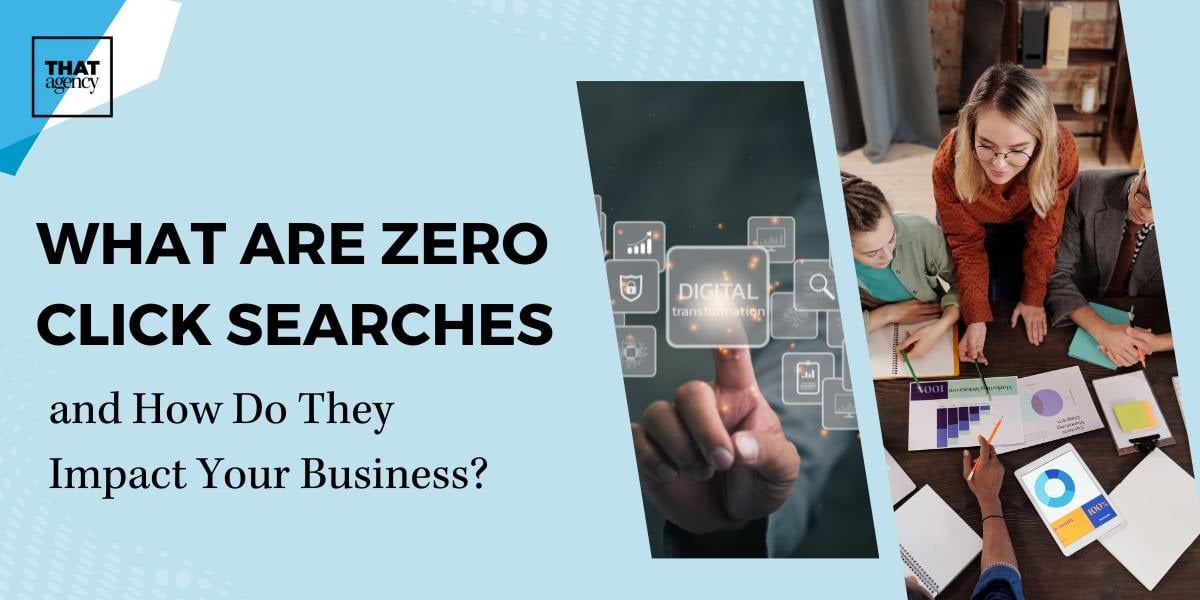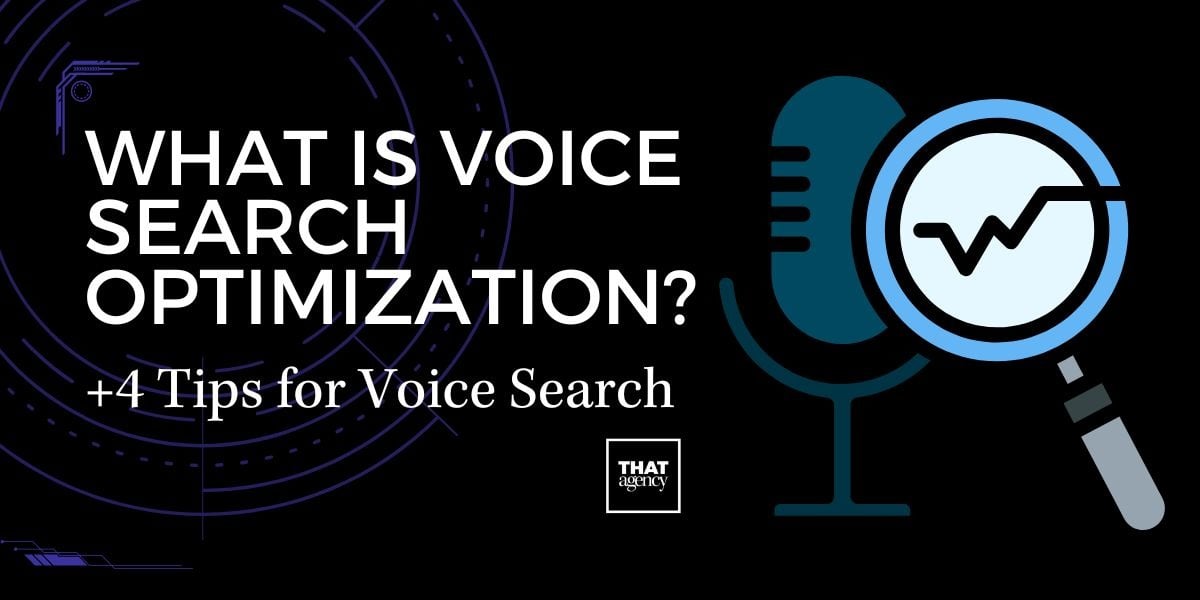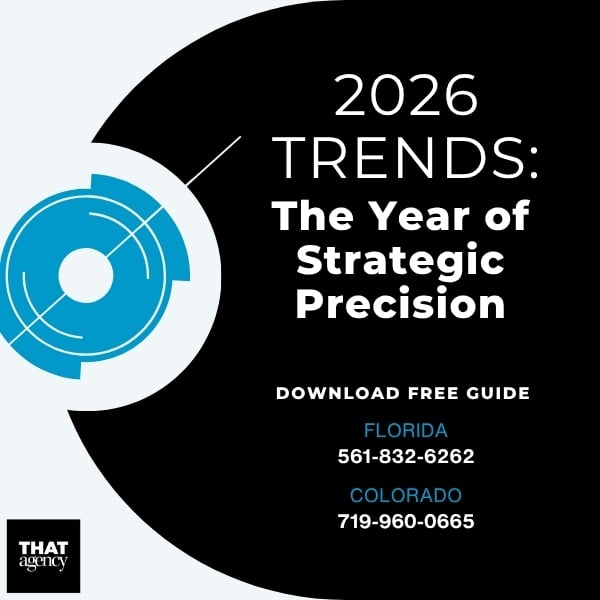If you own a business with a website, you've probably figured out that just having a site isn't cutting it anymore. You need content that shows up when people search online AND turns those visitors into customers. That's where a solid SEO content strategy comes in. It's like having a roadmap that helps your business get found online and grow.

In this guide, I'll walk you through how to create content that ranks high in search results and actually drives sales. These tips work whether you run a small local shop or a growing company with bigger goals.
What Is an SEO Content Strategy?
Think of an SEO content strategy as your game plan for creating website content that helps you show up in Google searches while also meeting your business goals. It's like having a roadmap that guides all your content decisions instead of just throwing things at the wall to see what sticks.
When most businesses create content, they focus only on what they want to say. But an effective SEO content strategy flips this approach by starting with what your audience wants to find. It's not just about pleasing search engines—it's about connecting with real people who might become your customers.
The Essential Elements of an SEO Content Strategy
A good strategy doesn't need to be complicated, but it should include these key components:
- Keyword research and selection
- Finding the specific terms and phrases your target audience is typing into search engines
- Understanding the search volume (how many people search for these terms)
- Analyzing the competition level for each keyword
- Identifying the business value of each potential keyword
- Content planning based on search intent
- Determining why someone is searching for a particular term
- Creating content that matches what they're actually looking for
- Addressing different stages of the buyer's journey with appropriate content
- Building content clusters around main topics that support each other
- Quality content creation
- Developing content that satisfies both search engines and human readers
- Structuring content in ways that make it easy to read and understand
- Including relevant multimedia elements like images and videos
- Optimizing technical elements like titles, meta descriptions, and headers
- Measurement and continuous improvement
- Tracking how your content performs in search rankings
- Monitoring traffic, engagement, and conversion metrics
- Identifying content that needs updating or improvement
- Refining your approach based on real data
How Is This Different From Regular Content Marketing?
You might be wondering how an SEO content strategy differs from just creating good content. Here's what sets it apart:
- It's data-driven, not just creative
Content marketing alone might focus on brand voice and messaging, while an SEO content strategy uses data to determine what topics to cover and how to approach them.
- It's systematic, not random.
Rather than publishing whatever feels right at the moment, an SEO content strategy follows a structured plan based on keyword research and content gaps.
- It's measurable, not just felt
Success isn't measured by how much you like the content, but by how it performs in search rankings and whether it drives meaningful traffic.
- It's comprehensive, not piecemeal
Instead of creating isolated pieces of content, an SEO strategy builds interconnected content that strengthens your overall site authority.
Real-World Example: How an SEO Content Strategy Works
Let's see how this might work for a local gardening supply store:
- They start with keyword research and discover people in their area frequently search for "how to grow tomatoes in [city name]" and "best vegetables for small gardens."
- They analyze search intent and find that people searching these terms want detailed guides rather than product recommendations.
- They create a content plan that includes comprehensive guides for growing different vegetables, with internal links to related products they sell.
- They optimize each piece with proper headlines, meta descriptions, and image alt text.
- They track performance and notice their tomato growing guide ranks well but doesn't convert visitors. They update it to include product recommendations that naturally fit within the content.
This strategic approach ensures every piece of content serves both the audience's needs and the business's goals.
The Business Impact of a Strategic Approach
With a real strategy, every piece of content has a purpose, which means better results without wasting your time. Businesses that implement a proper SEO content strategy typically see:
- 67% more leads than companies without a documented strategy
- Higher conversion rates from organic traffic compared to other channels
- Reduced cost per acquisition as content continues performing over time
- Increased market share as they establish topical authority in their niche
Common Questions About SEO Content Strategies
"Do I need a big budget to implement an SEO content strategy?"
Not necessarily. While larger companies might invest more, the core elements of an effective strategy can be implemented on any budget:
- Start with free keyword research tools like Google Keyword Planner
- Focus on creating fewer, higher-quality pieces rather than high volume
- Update and improve existing content before creating new content
- Prioritize keywords with lower competition but still relevant to your business
"How formal does my strategy need to be?"
Your strategy should be as detailed as necessary for your business size and goals:
- Solopreneurs might have a simple spreadsheet of keywords and content ideas
- Small businesses often benefit from a quarterly content calendar with assigned topics
- Larger organizations typically need more comprehensive documentation including content briefs, style guides, and workflow processes
The important thing is having something documented rather than keeping it all in your head.
"How long will it take to see results from my SEO content strategy?"
SEO is a marathon, not a sprint. Typically:
- You may see improved rankings for lower-competition keywords within 1-3 months
- More competitive terms might take 6-12 months to show significant movement
- The full business impact often takes 12+ months as your content authority builds
While this might seem slow compared to paid advertising, the long-term ROI is typically much higher.
"Should I focus on blog posts, or are other content types effective too?"
A comprehensive SEO content strategy should include various content types:
- Blog posts work well for informational keywords and building authority
- Product pages need optimization for transactional keywords
- FAQ pages can target specific questions your audience asks
- Resource libraries, tools, and calculators can attract links and engagement
The best content types depend on your specific audience needs and search intent.
"How does my SEO content strategy fit with my other marketing efforts?"
Your SEO content shouldn't exist in isolation. It works best when integrated with:
Think of your content strategy as the hub that connects all your marketing efforts.
Key Takeaway
An SEO content strategy isn't just about ranking higher in Google—it's about creating content that achieves business results more efficiently. By starting with user needs (as expressed through their searches) and aligning those with your business goals, you build a content foundation that works harder and smarter for your business.
Remember: Random acts of content rarely lead to consistent results. A strategic approach ensures every piece of content you create has purpose, audience, and measurable outcomes attached to it.

Why Your Business Needs an SEO Content Strategy
Creating content without a strategy is like taking a road trip without a map. You might be moving, but are you going somewhere worthwhile? Without a clear plan, you're basically throwing content at the wall and hoping something sticks. That's not just inefficient—it's a waste of your valuable time and resources.
Let's dig into why having a solid SEO content strategy is absolutely essential for your business:
1. You'll Focus on Topics That Actually Help Your Business
When you have a strategy, you stop guessing about what content to create. Instead, you:
- Research keywords that your potential customers are actually searching for
- Understand which topics drive the most valuable traffic to your site
- Create content that addresses specific customer needs at each stage of their buying journey
- Prioritize content that has the best chance of converting visitors into leads or customers
Real-world example: A local plumbing company was writing blog posts about random plumbing tips. After developing an SEO content strategy, they discovered homeowners were frequently searching for "emergency water heater repair." They created targeted content around this topic and saw a 45% increase in emergency service calls within three months.
2. You'll Stand Out From Your Competitors
The internet is packed with content, and simply publishing more won't help you stand out. A strategy helps you:
- Analyze what content your competitors are already creating
- Identify gaps and opportunities they're missing
- Create more comprehensive, helpful, or unique content
- Develop a distinctive voice and approach that sets your brand apart
What makes content stand out? Content that combines factual information with unique insights, personal experiences, or a fresh perspective will always outperform generic content that simply repeats what's already out there.
3. Your Website Visitors Will Have a Better Experience
Google's algorithms increasingly favor content that provides a good user experience. With a strategy, you can:
- Create content that directly answers the questions your audience is asking
- Organize related content in a logical way that helps visitors find what they need
- Build content paths that naturally guide visitors from awareness to consideration to decision
- Keep visitors on your site longer through internal linking and content recommendations
What does better user experience mean for your business? Higher engagement, lower bounce rates, more page views, and ultimately more conversions. When visitors find exactly what they're looking for on your site, they're more likely to trust your business with their needs.
4. You'll Become Known as an Expert in Your Field
Consistently publishing quality content establishes your authority in your industry. This happens because:
- Regular content shows you're actively engaged in your field
- In-depth, helpful information demonstrates your expertise
- Answering specific industry questions positions you as a knowledgeable resource
- Over time, both users and search engines recognize your site as an authority
How does becoming an authority help? When you're seen as an authority, you earn trust—and trust leads to business. People prefer to buy from companies they see as experts in their field.
5. Your Marketing Dollars Will Go Further
Content with good SEO is one of the most cost-effective marketing investments you can make because:
- Once created, it continues working for you 24/7, often for years
- Unlike paid ads that stop generating traffic when you stop paying, organic content keeps attracting visitors
- Well-optimized content compounds in value over time as it gains backlinks and authority
- It can be repurposed across multiple channels, extending its reach and value
What's the long-term ROI? While paid ads might bring faster initial results, content marketing with SEO typically delivers 3x the leads per dollar spent over the long term.
Common Questions About SEO Content Strategy
"How long will it take to see results from my SEO content strategy?"
SEO is a long-term investment. Generally, you can expect:
- Initial rankings improvements in 3-6 months
- Significant traffic increases in 6-12 months
- Full results can take 12-24 months, depending on your industry and competition
The good news? Once you start seeing results, they tend to compound over time.
"Do I need to create new content all the time, or can I update existing content?"
Both approaches are valuable:
- New content helps you target additional keywords and topics
- Updating existing content keeps it fresh, accurate, and competitive
Many successful businesses follow an 80/20 approach—spending 80% of their time updating and improving existing content and 20% creating new content.
"How much content do I need to create?"
Quality matters more than quantity. It's better to publish:
- One outstanding piece of content per month than four mediocre pieces
- Content that thoroughly covers a topic rather than thin content that barely scratches the surface
- Content that serves a specific purpose in your overall strategy
"Can small businesses compete with larger companies through content?"
Absolutely! Small businesses can often compete effectively by:
- Focusing on specific niche topics where there's less competition
- Creating content with local relevance that big companies miss
- Sharing unique industry insights that only come from specialized experience
- Developing a more authentic, personal voice that resonates with their specific audience
The Bottom Line
Businesses that stick with a good SEO content strategy consistently see more website visitors, more qualified leads, and more sales over time. According to industry research, companies with documented content strategies are:
- 3x more likely to report success with their content marketing
- 2x more likely to get buy-in for content initiatives from company leadership
- 60% more effective at measuring ROI from their content efforts
Without a strategy, you're essentially hoping to get lucky. With a strategy, you're building a system that consistently delivers results. Which approach would you rather take with your business?
Building Your SEO Content Strategy: Step by Step
Creating an effective strategy doesn't have to be complicated. Here's how to build a plan that works:
1. Define Your Goals and Audience
First, get clear on what you want to achieve. Are you trying to get more leads? Sell more of a specific product? Become known as an industry leader?
Then, figure out exactly who you're trying to reach. Think about:
- What jobs do they have?
- What problems are they trying to solve?
- What questions do they ask before buying?
- Where do they look for answers?
Knowing these basics will help guide all your content decisions.
2. Find the Right Keywords
Keyword research is super important for any SEO content strategy. It shows you what your potential customers are actually typing into Google, not what you think they might be searching for.
Start with broad topics related to your business, then use keyword research tools to find specific terms. Look for:
- How many people search for the term each month
- How hard it will be to rank for that term
- How likely the keyword is to lead to a sale
- What people want when they search that term
Group your keywords into related clusters. This helps you create thorough content that answers related questions and builds your authority on topics.
3. Understand Search Intent
Not all searches are looking for the same thing. Someone typing "what is SEO" wants something very different than someone searching "best SEO agency near me." Understanding what people want helps you create the right content.
Search intent usually falls into four types:
- Informational: Looking for answers (how to, what is, why)
- Navigational: Looking for a specific website
- Commercial: Researching before buying
- Transactional: Ready to buy now
Look at what's already ranking for your keywords to understand what Google thinks matches the search intent. Check:
- What types of content are ranking (lists, guides, product pages)
- How long and detailed the content is
- What topics they cover
- What images or videos they include
Then make content that meets that intent better than what's already out there.
4. Create a Content Plan
Now that you know your keywords and understand search intent, create a content calendar that includes:
- Topics you'll cover
- Keywords you'll target
- What format you'll use (blog post, video, etc.)
- When you'll publish each piece
- Who will create it
Focus first on content that:
- Targets valuable keywords that aren't too competitive
- Fills gaps in your current content
- Answers questions people have at different stages of the buying process
- Can be created with the resources you have
Your plan should include some quick wins along with longer-term projects.
SEO Copywriting Services: Creating Content That Ranks and Converts
Even with a great strategy, how you execute matters a lot. This is where SEO copywriting services can really help. Professional SEO copywriters know how to create content that pleases both Google and your human readers.
Good SEO copywriting services deliver content that:
- Naturally includes your target keywords without stuffing them in awkwardly
- Matches what searchers want with the right format and information
- Keeps readers interested with clear, engaging writing
- Uses proper headings and formatting for easy reading
- Consistently follows SEO best practices
Many businesses find that hiring professional SEO copywriting services gets better results than trying to create all content in-house, especially when your team is already busy with other tasks.
5. Optimize Your Pages for Search Engines
On-page optimization helps search engines understand your content. For each piece, optimize:
Title Tags
- Put your main keyword near the beginning
- Keep it under 60 characters
- Make people want to click it
Meta Descriptions
- Summarize your content and include a call to action
- Include your main keyword naturally
- Stay under 160 characters
Headers (H1, H2, H3)
- Use only one H1 (usually your title)
- Include keywords in your H2s and H3s where it sounds natural
- Organize your content logically so it's easy to read
URLs
- Keep them short and descriptive
- Include your main keyword
- Use hyphens between words
Images
- Compress them so they load quickly
- Add descriptive alt text
- Use relevant file names
These technical elements work together with your written content to tell Google what your page is about.
6. Create Really Good Content
While the technical stuff is important, content quality is still king. Google's getting better at rewarding content that truly helps users.
Really good content:
- Fully answers the question or solves the problem
- Offers unique insights or information
- Is well-written without errors
- Includes helpful images or examples
- References trustworthy sources when needed
Focus on creating the most helpful resource possible, not just checking SEO boxes. When users find real value in your content, they stay longer, engage more, and are more likely to become customers.
7. Track Results and Make Improvements
An SEO content strategy is never "done." You need to keep checking how it's performing and making it better based on real data.
Track things like:
- How many visitors come to your content from search
- Where your content ranks for key terms
- How people interact with your content (time on page, bounce rate)
- How many visitors take action (like filling out a form)
- How many backlinks and social shares you get
Use what you learn to:
- Update content that isn't performing well
- Create more content on topics that are working
- Find new keyword opportunities
- Adjust your approach based on what's getting results
Regularly reviewing your content helps keep your strategy fresh and aligned with changing search patterns and business goals.
How Social Media Helps Your SEO Content Strategy
Think of your SEO content strategy and social media as teammates, not separate players. While Google might say social media signals don't directly impact your search rankings, the reality is that a strong social media presence creates numerous benefits that ultimately boost your SEO performance.
Let's explore how these two digital marketing powerhouses work together to help your business grow:
1. Gets Your Content in Front of More People
Social media platforms give your content additional places to shine beyond your website. Here's why this expanded reach matters:
- Your content reaches people who might never find you through search engines alone
- Each share creates a ripple effect, potentially reaching thousands of new eyes
- Different platforms help you connect with different audience segments
- Content that goes viral on social media often leads to natural backlinks, which do directly impact SEO
Real-world example: A local bakery created a blog post about their unique sourdough process. After sharing it on Instagram with beautiful photos, it got picked up by a popular food blogger, resulting in a 200% increase in website traffic and several high-quality backlinks.
2. Brings More Visitors to Your Website
Social media serves as another highway leading straight to your website, and this traffic matters for several reasons:
- More diverse traffic sources make your business less dependent on Google algorithm changes
- Social media traffic often has different engagement patterns than search traffic, providing new insights
- Google does track user engagement metrics like time on site and pages per visit
- Higher overall traffic volumes signal to search engines that your site is valuable and relevant
Does social traffic help with rankings? While Google doesn't use social signals directly, the engagement metrics from that traffic can positively influence how Google views your site's overall quality.
3. Gets Your Content Indexed Faster
When you publish new content, you want Google to find and index it as quickly as possible. Social media can speed up this process because:
- Google's crawlers often discover new content through social media links faster than waiting for your site to be crawled
- Higher visibility from social shares can lead to more sites linking to your content, which prompts faster indexing
- Social platforms themselves rank highly in search results, so your brand mentions there can appear quickly
How fast does this work? Content shared on Twitter or LinkedIn can sometimes be indexed within hours, compared to days or even weeks for content that isn't promoted socially.
4. Builds Brand Recognition and Trust
Being active on social media builds familiarity with your brand, which has several SEO benefits:
- People are more likely to click on search results from brands they recognize
- Familiar brands typically get higher click-through rates in search results
- Higher click-through rates are a positive ranking signal for Google
- Brand searches (when people search specifically for your company name) are a powerful ranking factor
How brand recognition affects user behavior: When users see your brand in search results after engaging with you on social media, they're up to 3x more likely to click on your link than on an unfamiliar competitor's link.
5. Gives You Immediate Feedback on Content
Social media provides real-time insights about what resonates with your audience:
- Likes, shares, and comments show immediately what topics generate interest
- Audience questions highlight information gaps you can fill with future content
- Low engagement posts help you identify topics to avoid or approaches to change
- Conversations reveal the exact language your customers use, which helps with keyword research
How to use this feedback loop: When a social post performs exceptionally well, consider creating expanded website content on that topic. When it performs poorly, rethink your approach before investing in longer-form content.
6. Extends the Life of Your Content
Great content should keep working for you long after you publish it, and social media helps make that happen:
- You can reshare evergreen content multiple times over months or years
- Different platforms allow you to reach new audiences with the same core content
- Seasonal content can be revived annually with fresh social promotion
- Updates to existing content can be announced through social channels, bringing back previous readers
Content longevity tip: Create a social sharing calendar that reschedules your best evergreen content every few months with fresh messaging and visuals.
7. Builds Relationships That Lead to Backlinks
Perhaps the most powerful SEO benefit of social media is its ability to help you build relationships that lead to natural backlinks:
- Connecting with industry influencers can lead to mentions in their content
- Active participation in industry conversations positions you as a source worth citing
- Sharing and commenting on others' content creates reciprocity
- Direct relationships with content creators lead to more natural link opportunities
Link building through relationships: Traditional link building outreach has a 5-10% success rate, while requests coming from established social media relationships can see success rates of 20-30% or higher.
Making Social Media Part of Your SEO Content Strategy
Here's how to integrate social media into your SEO efforts for maximum impact:
- Create platform-specific versions of your content
- Adapt your message to fit each platform's unique audience and format
- Use native features like Instagram carousels or LinkedIn documents for better engagement
- Modify your tone and approach based on the platform's culture
- Add social sharing buttons to all your content
- Make it effortless for readers to share your content
- Include pre-written share text that highlights key points
- Position buttons where they're most likely to be used (beginning, end, and alongside key points)
- Actively participate in relevant groups and conversations
- Don't just broadcast—engage with others meaningfully
- Answer questions in your area of expertise
- Share valuable insights without always promoting your content
- Repurpose your content for different social formats
- Turn blog posts into slide decks for LinkedIn
- Create infographics from data-heavy content
- Extract short video tips from comprehensive guides
- Share key quotes as social media images
- Build relationships with influencers in your industry
- Engage with their content genuinely and consistently
- Share their valuable content with your audience
- Look for collaboration opportunities
- Mention them in your content when relevant
Common Questions About Social Media and SEO
"Which social media platforms should my business focus on?"
The best platforms depend on your specific audience:
- LinkedIn works best for B2B companies and professional services
- Instagram and Pinterest excel for visually-oriented businesses
- Facebook remains powerful for local businesses and community building
- Twitter works well for news, trending topics, and quick customer service
- TikTok is growing rapidly for reaching younger audiences
Focus on 2-3 platforms where your audience is most active rather than trying to be everywhere.
"How often should I post about my blog content on social media?"
For each piece of content:
- Share it at least once on publication day
- Reshare it 2-3 times in the first week with different messaging
- For evergreen content, schedule ongoing shares every 6-8 weeks
- When you update the content, share it again highlighting what's new
"Should I just post links to my website content?"
No! Variety is key:
- Mix direct links with native content that keeps users on the platform
- Share thoughts and insights without links sometimes to build relationships
- Create platform-exclusive content that complements your website material
- Experiment with different formats like polls, questions, and stories
"How do I measure the SEO impact of my social media efforts?"
Track these metrics to see the connection:
- Referral traffic from social platforms to your website
- Engagement rates on social posts about specific content
- New backlinks acquired after social promotion periods
- Changes in branded search volume as social presence grows
- Indexing time for content with and without social promotion
The Power of Integration
When your SEO content strategy and social media efforts work together, they create a powerful feedback loop. Your SEO research informs your social content, while social engagement shapes your SEO priorities. This integration helps both channels perform better than either could alone.
Remember, it's not about choosing between SEO and social media—it's about finding smart ways to make them support each other for maximum impact on your business growth.
Common SEO Content Strategy Mistakes to Avoid
Even with the best intentions, SEO efforts can go wrong. Watch out for these common mistakes:
- Creating content for search engines instead of people Always focus first on providing value to users; the SEO stuff should enhance, not take over, the user experience.
- Only going after popular keywords More specific keywords with lower search volume often convert better and have less competition.
- Never updating old content Fresh, updated content often does better than older content, even if the older content ranked well at first.
- Publishing inconsistently An effective SEO content strategy needs consistency to build momentum.
- Forgetting to link between your pages Internal links help Google understand your site structure and pass authority between pages.
- Ignoring user experience Even the best-optimized content won't perform if it's hard to read or access, especially on phones.
Avoiding these mistakes will help you build a content strategy that delivers results for years to come.
Conclusion
A good SEO content strategy is one of the most valuable marketing tools your business can have. It brings qualified visitors to your website day and night, establishes your expertise, and creates multiple chances for conversion.
Remember that success doesn't happen overnight. An SEO content strategy is a long-term investment that builds momentum over time. Start with solid research, create helpful content that serves your audience, and keep improving based on what works.
By following the steps in this guide, you'll be well on your way to creating content that not only ranks high but also turns visitors into customers.
Ready to take your content to the next level? Contact THAT Agency today to learn how our SEO and content marketing experts can help you build a strategy that drives real business results.




.jpg)

